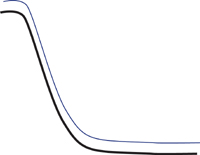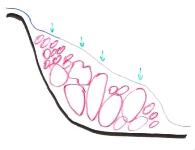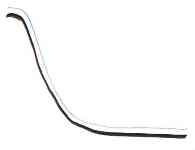Sluice Analogy – a Model for System-wide CPI Project Selection

Imagine that you have arrived at the site of the overflow sluice for a hydroelectric dam. This sluice was designed to smoothly, efficiently, and quickly move water from where it enters the sluice to where it can be delivered safely downstream. Water would go very rapidly from beginning to end. There would be no backflows. There would be no whirlpools. There would be no dead space where water was not moving. And, there would actually be very little water.
Unfortunately, however, there has been an avalanche that has filled the sluice. Now, the sluice operates very differently than it was originally designed!

Unfortunately, this illustration is an uncannily-accurate, concrete depiction of many processes that exist today in production and service operations across all economic sectors because the individual operations within these processes are conceived, designed, implemented and managed in relative isolation from each other. Understanding how to proceed with this depiction provides insight into how to repair and improve these processes.
Now, back to the sluice. As you look in, you see all sizes of rubble in the sluice all the way from sand and pebbles to stones you can pick up and boulders the size of your house. And what’s more, the water goes over the top of the rubble as well as throughout all of the rubble. In addition, you cannot see all of the rubble! You can only see the rocks and boulders that are visible from the top of the water.
The flows in this “process” are a mess! There are backflows, eddies, and whirlpools that miss-direct and redirect the flow. In addition, there are pools at the bottom of the sluice where water “checks in but it never checks out!” (In manufacturing and information processing flows, we call these “black holes”, although “roach motel” might not be a bad label either! These “black holes” obtain a life and physical space of their own, and they attract other things into their black-holeness that never leave the process or system.) Moreover there is a lot of water. Compared to the original design concept, it takes a long time, on average, between when water enters and when it leaves the sluice!
Anyway, back to the boulders, rocks, and pebbles and whatnot that have wound up in this sluice. The object of continuous improvement is to pick “the biggest rock”, or in other words, the largest impediment to full system flow for the entire sluice… and eliminate it. This “largest impediment to full system flow” is the most effective place to focus your improvement energies and resources, but be warned… sometimes they wear Gucci’s or boots. (See the Theory of Constraints and the Chiropractic School of Lean Implementation articles.)

- There are fewer backflows, fewer eddies, and fewer places for the water to stop or get delayed or diverted.
- There is less water in the system because you have removed the impediments to flow. We call this inventory reduction and it does not happened by itself, by magic, or by coincidence. It happens due to removing supply-risk to individual steps within a process.
- Water entering the overflow sluice takes less time, on average, to leave the sluice. This is called the throughput time. This concept is very analogous to the amount of time between when a sales order is accepted and when it is paid for (not just completed or even just invoiced!).
For example, if you remove a third of the water in the sluice (by removing flow impediments such as rocks and boulders) it will take only two thirds of the original time to go through, on average. This is very analogous to something that takes 12 weeks to produce, dropping to only taking eight weeks to produce because 1/3 of the impediments to flow have been removed.

We will go over how to accomplish this in the concrete examples later on in this site.
PS. Also, later in the site, we will get into various perspectives on Continuous Process Improvement or CPI. The Sluice is the overall “Program” and sequentially removing the boulders, rocks & other impediments to flow in the organization comprise the “Projects.” I explain “Project-level” CPI in the Helix article and in the Strategic CPI article. In short, each rock, each flow-impediment, whether critical or not to overall systemic flow, requires 4-6 sequential trips around the PDCA cycle… or in other words… a Helix.
